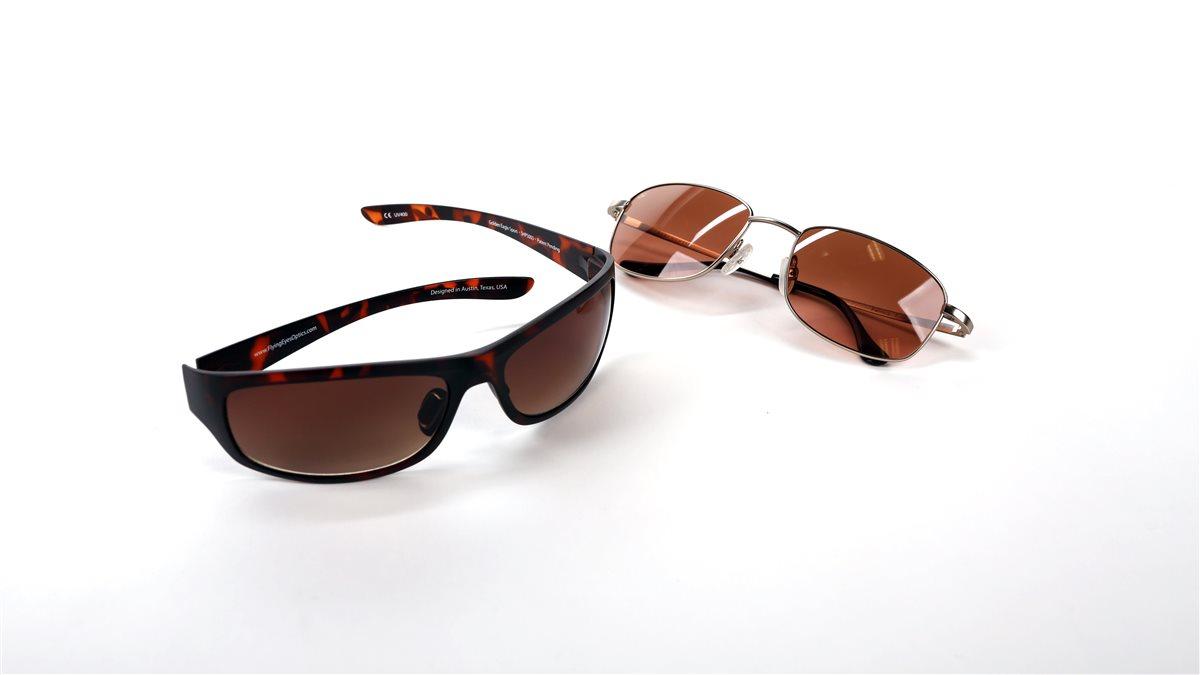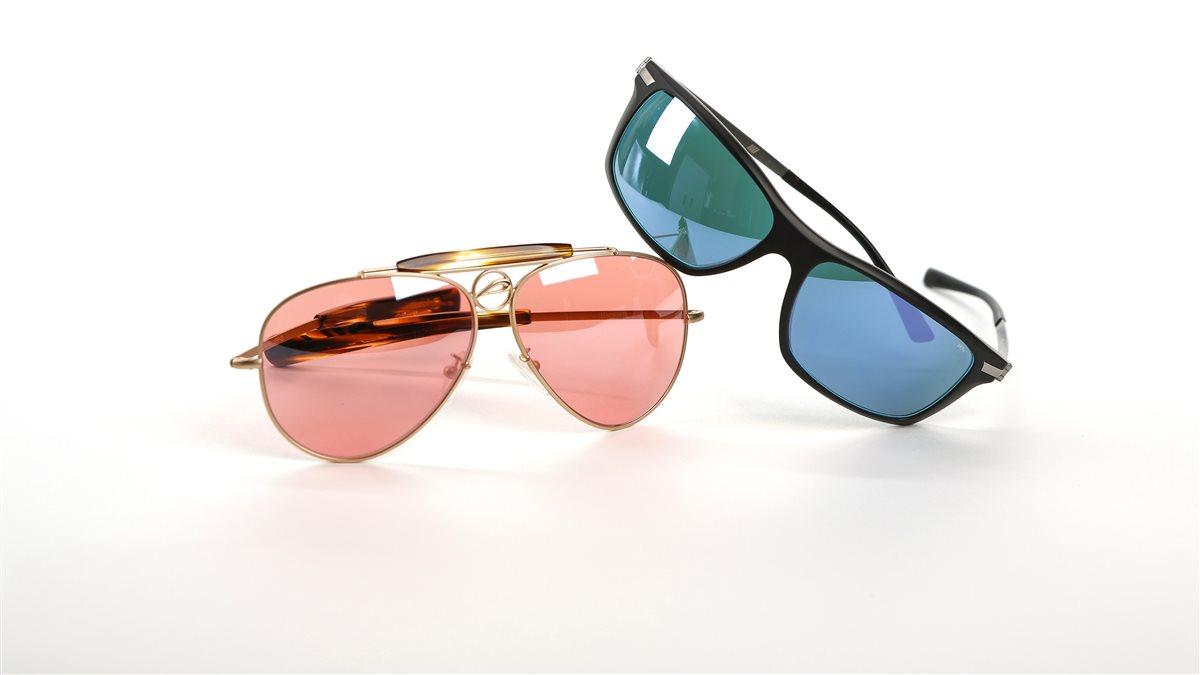Products: Visionaries
Sunglass options for the cockpit
 Flying Eyes
Flying Eyes
Flying Eyes sunglasses (left) are meant to be worn with modern ANR headsets, and their paper-thin frames preserve the delicate ear seal that noise-cancelling headsets depend on. Our tester flew a four-hour leg wearing the company’s new, top-of-the-line, traditional-looking Cooper sunglasses and found them extremely comfortable with an ANR headset. The company’s new line has the advantage of being easy to take on and off in the cockpit, and they’re far better for everyday, nonaviation use. (The straps on the original could be kind of cumbersome.) Flying Eyes lenses provide exceptional ultraviolet protection (the lenses are rated at UV 400) and they’re nonpolarized, so they’re good for viewing glass-panel avionics. They’re also available in prescription and bifocals (at extra cost).
Price: $149 to $299 depending on model.
Contact: www.flyingeyesoptics.com
—Dave Hirschman
Serengeti
Serengeti (right), a company synonymous with aviation sunglasses, recently launched its 10-piece Pilot Collection. The collection’s styles run from Goose and Maverick aviators to more modern takes on military styles. They include Carrara, Treviso, Carrara Small, Palinuro, Modugno, Aerial, Norcia, Brando, Corleone, and Alghero. Our tester loved the lenses for their ability to bring out colors in all kinds of light, a Serengeti trademark the company has branded Spectral Control. The frames are comfortable, and thin enough to sit behind a headset as well.
Price: $199.99 to $249.99
Contact: www.serengeti-eyewear.com
 Pilla
Pilla
To some, sunglasses are a required piece of equipment anytime they get in the airplane. Pilla’s (left) new line of high-end glasses is a top choice for that piece of equipment. If you’ve watched shooting sports in the Olympics, you’ve seen Pilla’s glasses. The same lens technology that helps virtually 90 percent of Olympic shooting athletes hit the bullseye or the clay is now available in the cockpit. Our tester noted the great lens performance and equally strong build quality. The same glasses can be worn on bright, sunny days or on cloudy IFR days to enhance cloud definition, a benefit seen in testing—which translates to less of the constant on-again, off-again sunglasses dance. You’ll have to get used to unique lens colors, and the styles are traditional. But if you’re looking for one of the best performers, you can’t go wrong with Pilla.
Price: $289, $449
Contact: www.pillasport.com
Method 7
It would take a book to fully describe the technology in Method 7’s (right) sunglasses. The CliffsNotes version is this: Ultraviolet light adds heat and radiation to the cockpit, and Method 7 glasses are engineered to keep it off your eyes. Unlike modern cars, most older airplanes don’t have windscreens that filter out this UV light. And keeping your eyes protected from UV is as important in the airplane as it is on the beach. Our tester found Method 7’s models to be comfortable and durable. The unusual blue lenses are designed to keep that UV spectrum out and amplify the visual spectrum.
Price: $239
Contact: www.methodseven.com



